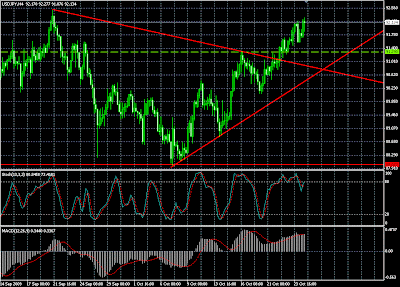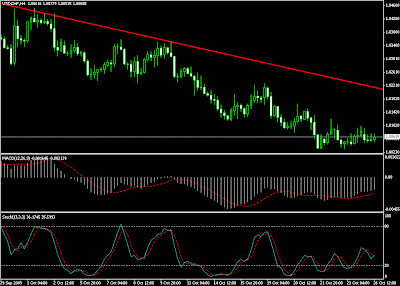Ahmedabad, India - When in remote areas of Africa and the Indian subcontinent night falls, hundreds of millions of people living without electricity, have resorted to using candles and flammable, polluting the air, kerosene candles.
Very slowly, with the help of microloans to buy fed by solar energy devices, micro brings light to these rural areas where electricity shortages have driven into a corner and economic development, education and health.
"Before they could do little after sunset. Now, the sun is used differently. They have increased their productivity, improved health and socio-economic status ", - said Pina Shah (Pinal Shah), working in microcredit institutions Sewa bank.
Seller vegetables Ramiben Wagri (Ramiben Waghri) took out a loan to buy a solar lantern, which she uses to cover his stall at night. Lantern stands at around $ 66-112, which is approximately weekly income Wagri.
"Vegetables look better by this light, it is cheaper than using kerosene and does not smell" - said Wagri, which assesses the daily supplement to their income of about 300 rupees ($ 6).
"If we can use the sun to save a little money, why not?"
In India, solar energy projects are often financed micro-credit institutions that help countries to reduce carbon emissions and achieve its goal of doubling the participation of renewable energy sources in the industry to 6% (25,000 megawatts) over four years.
Stand-alone devices such as solar panels and lights, which can provide several hours of light at night, charged by the sun during the day, will help reduce dependence on fossil fuels and reduce the carbon footprint of the fourth largest source of emissions, "said Pradeep Dadich (Pradeep Dadhich), Senior Researcher at a research university TERI.
"They are used by people who have limited or no access to electricity and depend on kerosene, diesel or wood," - he said.
"These devices not only meet these needs, they also improve the quality of life and reduce carbon dioxide emissions."
SEWA (Self-Employed Women's Association) - is one of their fast-growing microfinance institutions in India, which aims to provide poor people affordable renewable sources of energy that would otherwise have to stand for hours in queues for kerosene for lamps, or to overcome the miles to stock up firewood to cook the food.
SKS Microfinance - the largest manufacturer in India, predagaet sun lamp for 5 million of its customers, while, as Grameen Surya Bijlee Foundation (deals with problems of solar electricity for villagers) is helping to finance the purchase of lamps, home and street lighting systems for rural India, Nepal and Bangladesh .
"Electricity - is the task of government, but it is a huge task alone and it will fail," - said the coordinator of the South Asia Renewable Energy and its efficient use of Shirish Garud (Shirish Garud).
"In many cases, the end user can not access traditional banking services and financial services, which is why we need to microfinance.
Aryavart Gramin Bank has approved loans for the installation of 8000 solar home systems in Uttar Pradesh, India's largest state, which is also the largest producer of grain.
In remote areas of Africa and, through microloans, homes, schools and individual companies appears electricity. Poor people use money they would spend on kerosene to repay their loans taken for purchase of solar panels.
Billion lamps Hundreds of millions of people in India are limited or no access to electricity. Nevertheless, the growing demand for electricity by industries in a country that sees its GDP growth rate of 9% or higher over the next three years and in 2007/2008 was faced with serious problems in facilities and infrastructure.
Of the 76 million homes that do not have access to electricity, 65 million use kerosene released into the atmosphere. According to REEP, kerosene is flammable and produces smoke. Every year thousands of people in developing countries die from accidents that result from kerosene lamps and stoves.
Developing countries currently emit more than half of all greenhouse gases in the world, and this figure will grow.
As expected, emissions of greenhouse gases in India would jump from about 4 billion tons to 7.33 billion tons by 2031. Currently in India there is no accurate data on emissions of greenhouse gases.
Per capita emissions are 1.2 tonnes, the expected growth is 2.1 tons by 2020, according to a recent study financed by the state.
India adds about 10 gigawatts of energy each year and are likely to face a shortage of 21,000 megawatts, as well as the expansion of production capacity can not keep up with demand, leading to a greater number of outages. Solar energy is a little relieve network.
In neighboring Bangladesh, the public and the private sector can generate from 3700 to 4300 megawatts daily against a demand of 5500 megawatts, according to the State Administration for energy development.
Only 40% of the population have access to electricity, microfinance institutions, as the Grameen Bank made a major push to expand the use of solar energy.
Since 2001, Bangladesh was established 350,000 solar home systems and 550,000 solar lanterns have been implemented, allowing electricity to about 4 million.
"At the moment 2.5 million people benefit from solar energy, and we plan to achieve the target of 10 million people who use this type of energy by 2012," said Deepa Chandra Barua (Dipal Chandra Barua), Executive Director of Grameen Shakti, which is an affiliate of Grameen Bank, awarded the 2006 Nobel Prize in the field of alternative energy sources.
Alternative Energy Renewable energy in India produces less than 3% of the total power consumption in the country, and the main source is the wind.
Investor interest in solar energy grows, new plans for the use of solar energy will be sounded in December, in conjunction with the Summit in Copenhagen on climate change.
In the western state of Gujarat, which launched its own program for the development of solar energy in the beginning of the year, planned to build solar parks. But even here, microfinance helps to power lamps and stoves, as the scale of towns, both small towns, where there is power failure.
She sews clothes for the sewing machine, fed by solar energy in the city of Ahmedabad in western India, Sep 10. 2009
REEEP, which is developing 10 projects on renewable energy with the help of microfinance, believes that the required 234 billion rupees ($ 49 billion) to provide electricity for 65 million rural homes.
This amount is less than half the total subsidy, which provides the government to make kerosene affordable for the poor.
Part of this money will come from microfinance institutions, which face significantly less risk by issuing short-term loans for equipment for the accumulation of solar energy. REEP, along with the Research Institute of Energy TERI, are campaigning is "light billions of lives", which aims to replace kerosene lamps solar energy.
Launched last year with the help of partners such as the Clinton Climate Initiative, this program provided the energy of more than 100 villages.
Sewa's Project Urja ( "energy") with financial support from US-based Lemelson Foundation, partners India's Solar Electric Light Co (SELCO) move toward the improvement of solar devices.
"It's cheaper, environmentally friendly and requires less maintenance," said Pina Shah, responsible for energy projects in the Sewa Bank, which provided more than 6 million rupees ($ 124,000) in loans for the purchase of solar panels, approximately 10% of the 300,000 claiming the credit.
Other devices SELCO, include head lamps for midwives, solar panels for the farmers, distributing of silk worms for silk industry, sewing machines, working on solar panels.
In the congested area Jamalpur in Ahmedabad, a small shop Salma Mohammed highlighted the expense of solar energy on the batteries, bought on credit for 33,000 rupees, which provided Sewa Bank.
"This store has helped me raise my children," the tale he. Solar panels have improved our lives, giving us enough to be thankful.
($ 1 = 48 rupees) Micro loans bring light to rural poor
Reuters
October 27




























